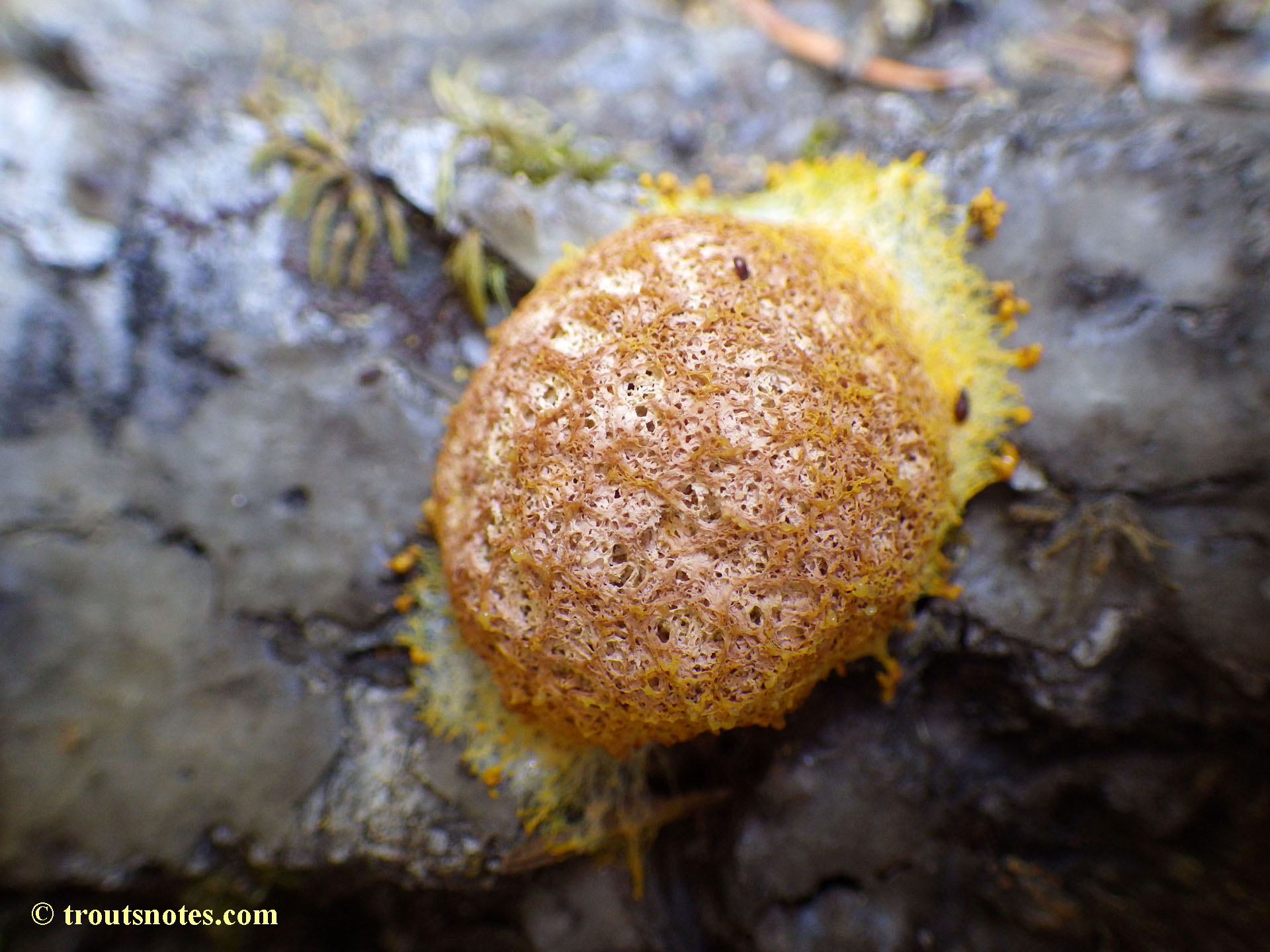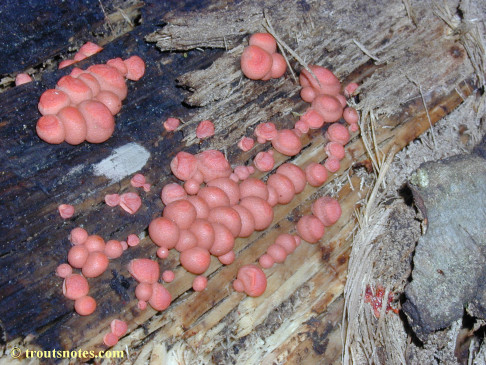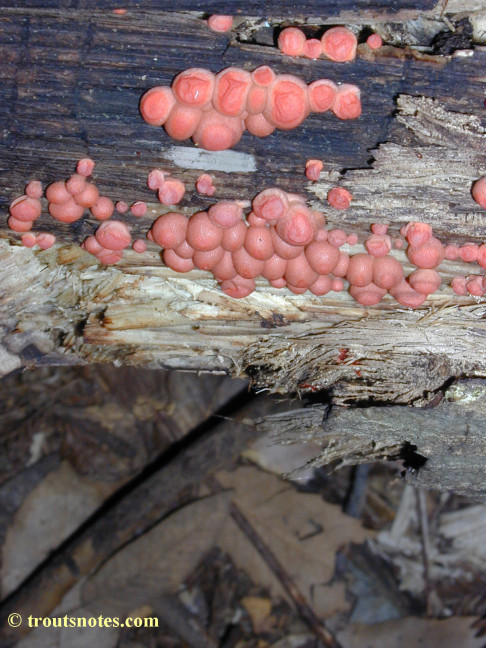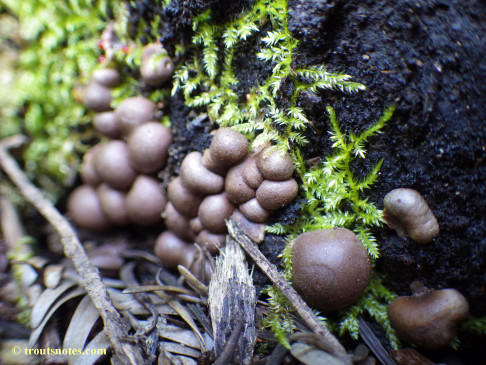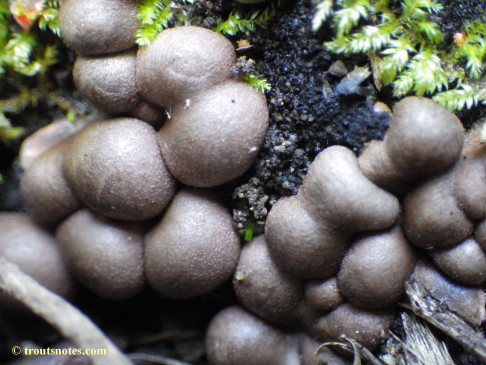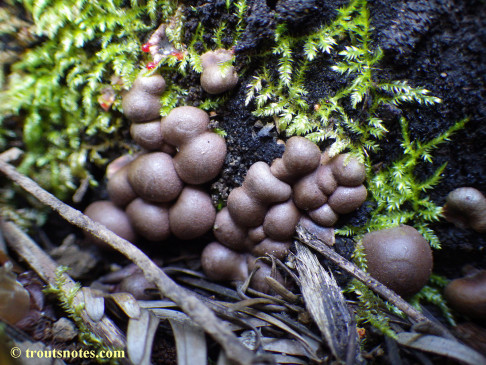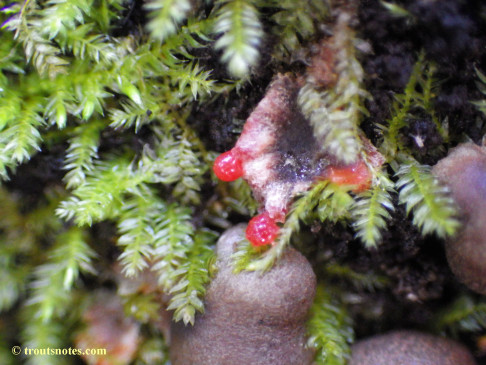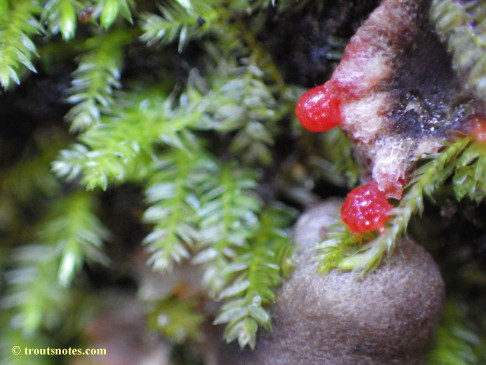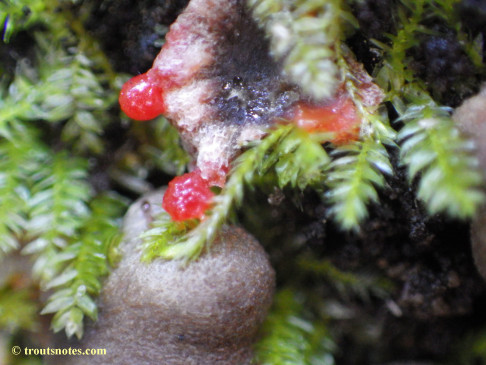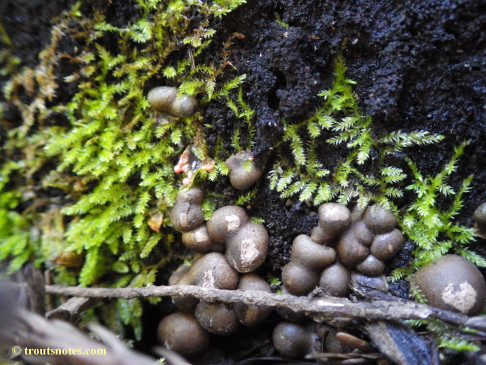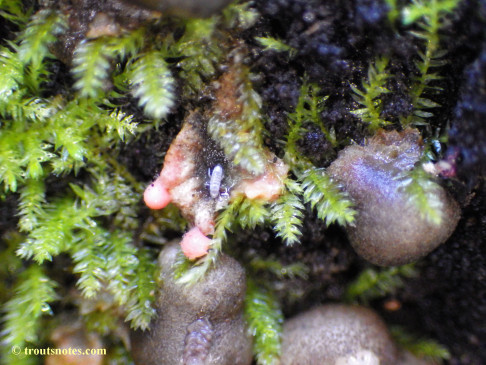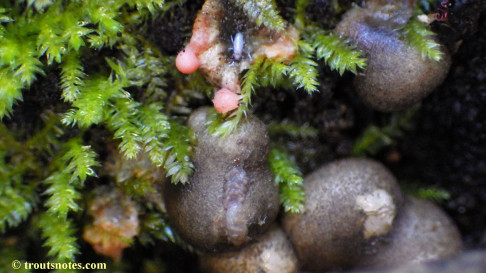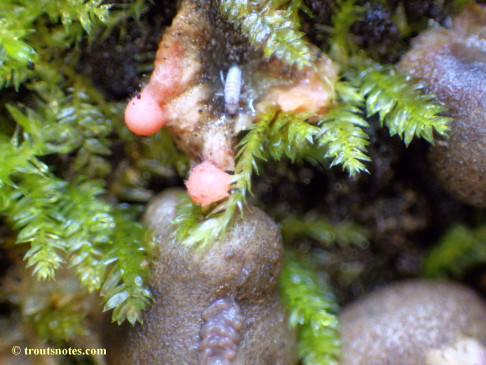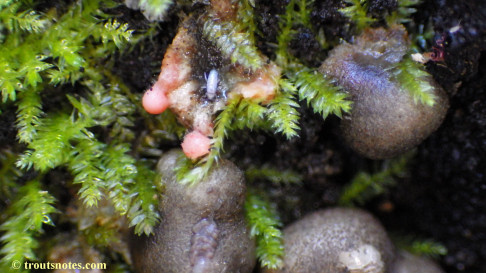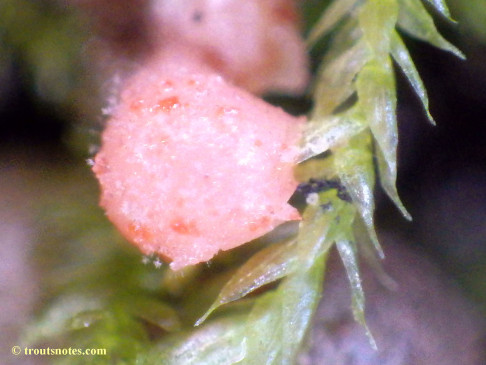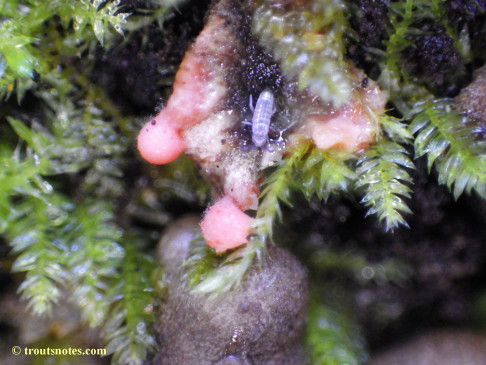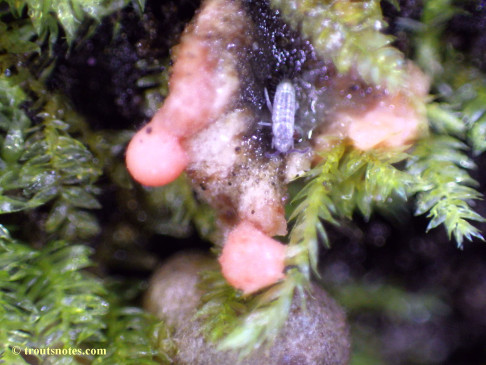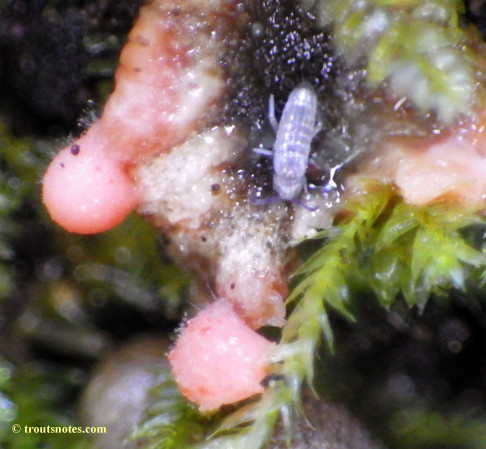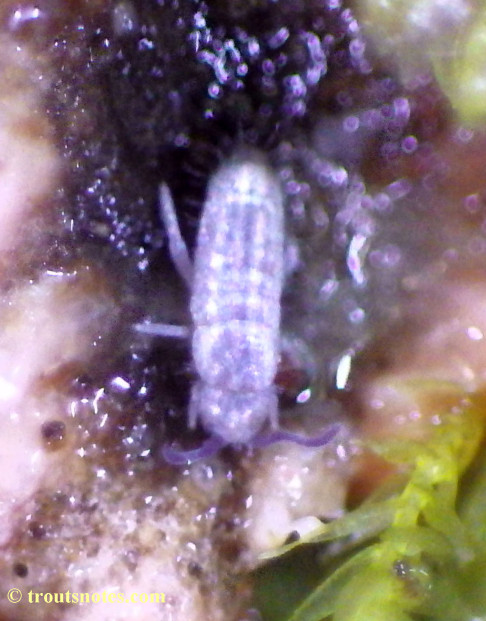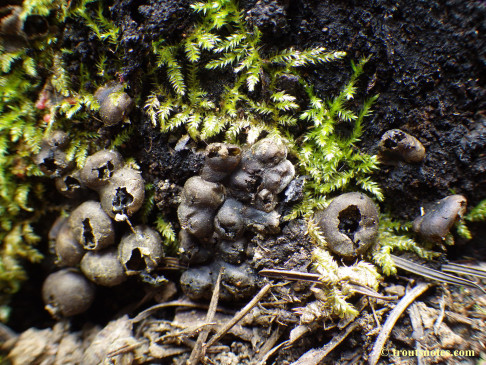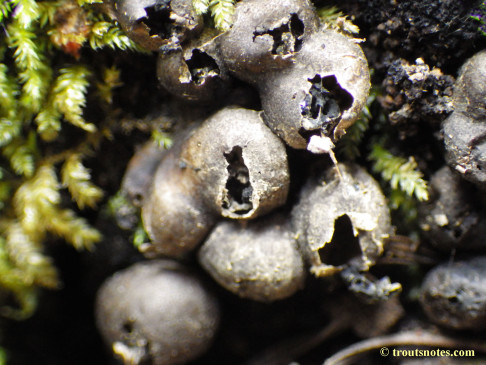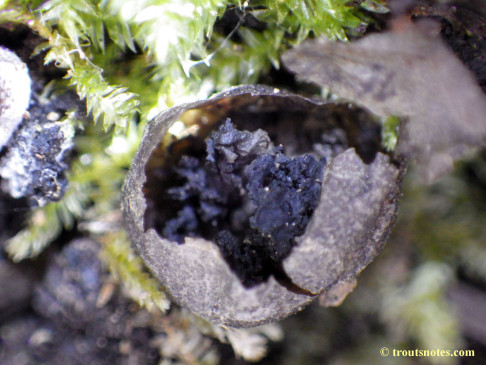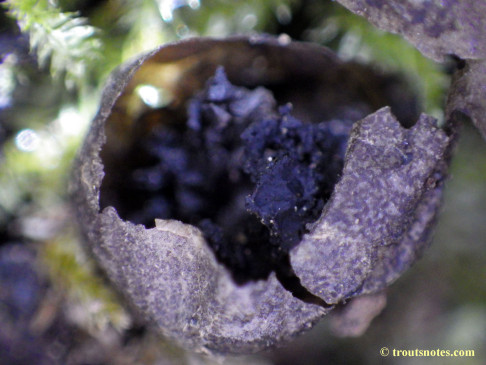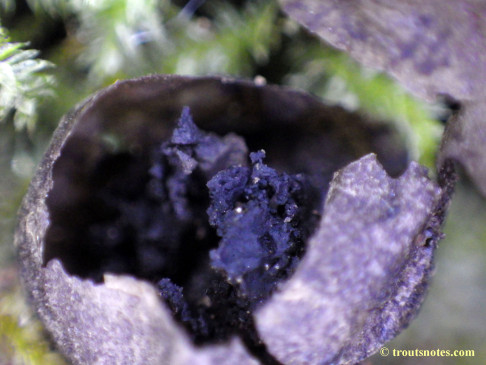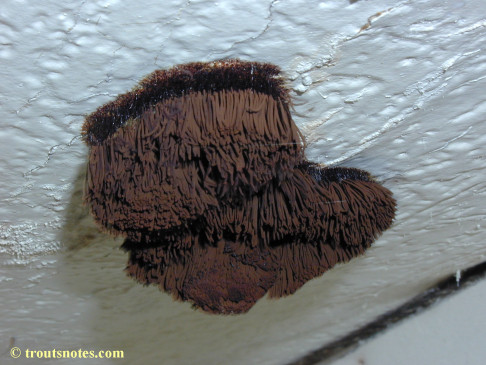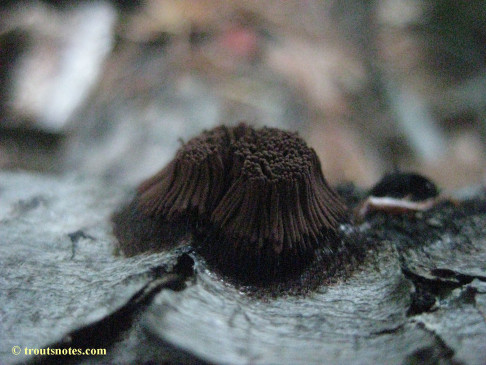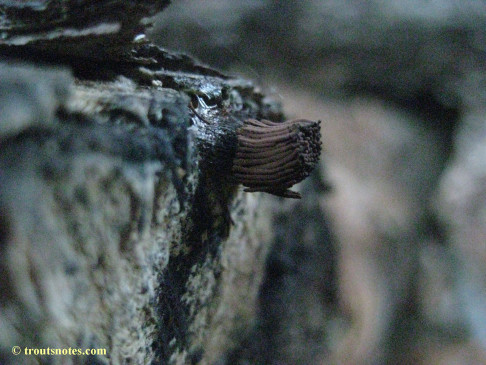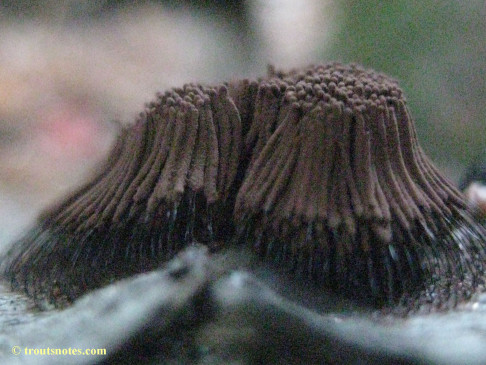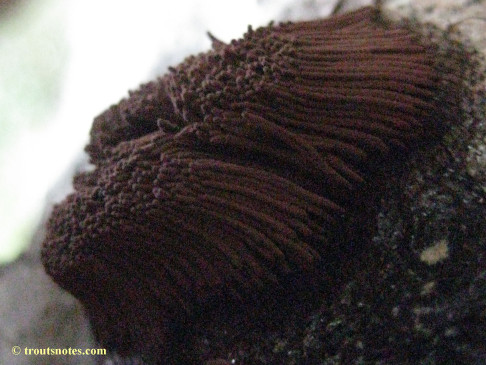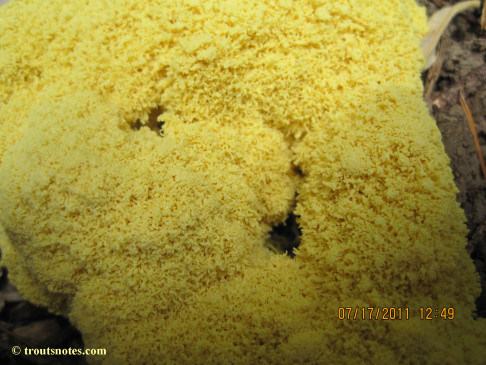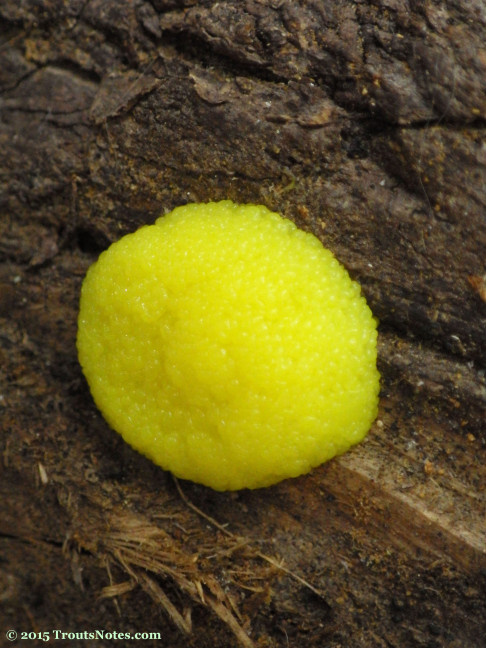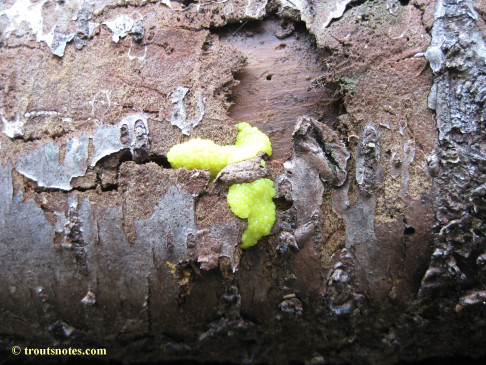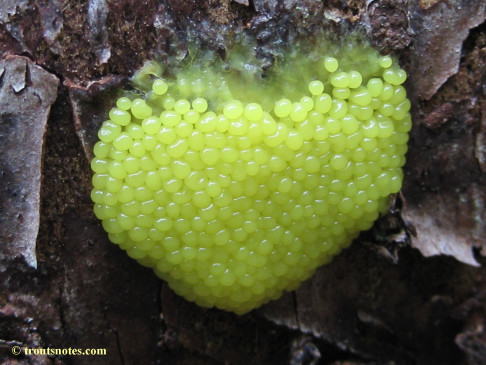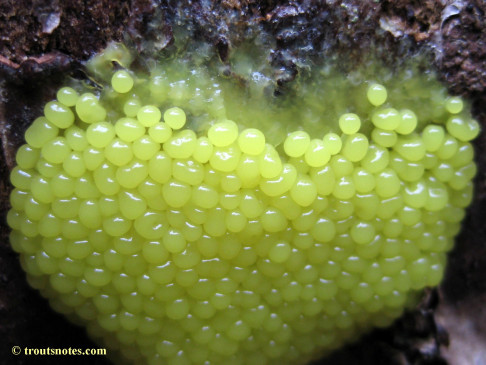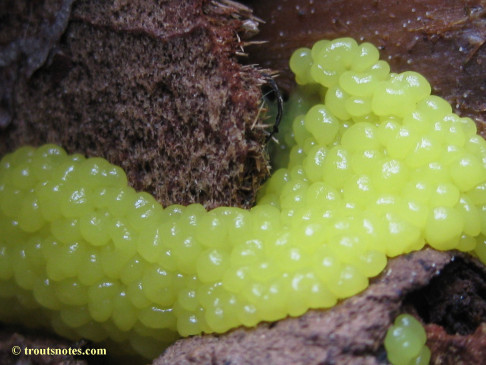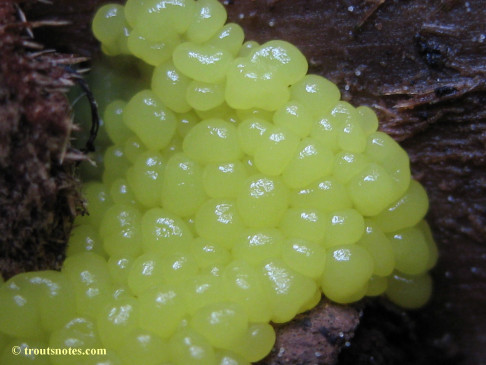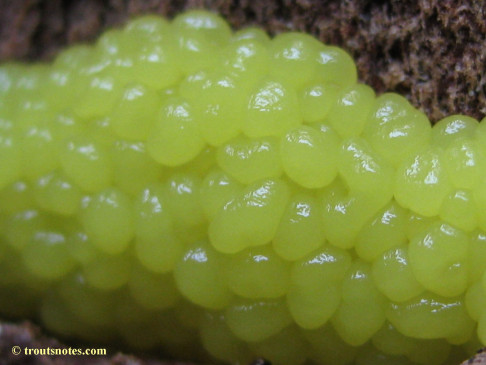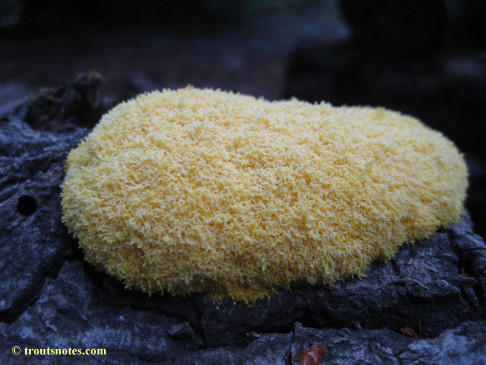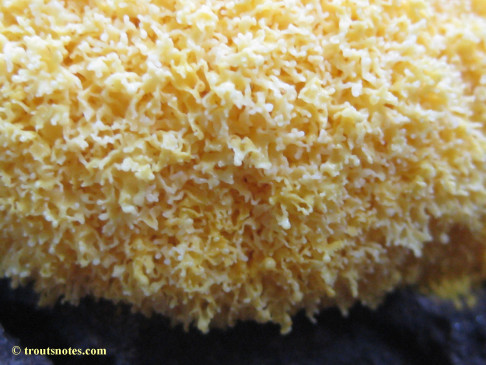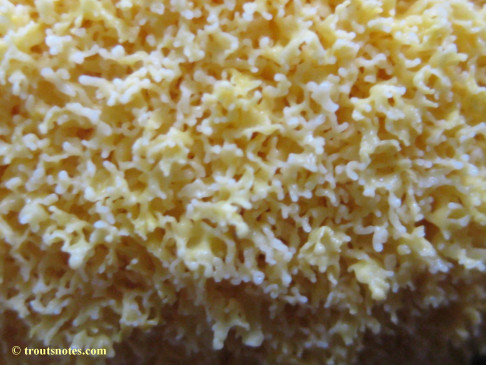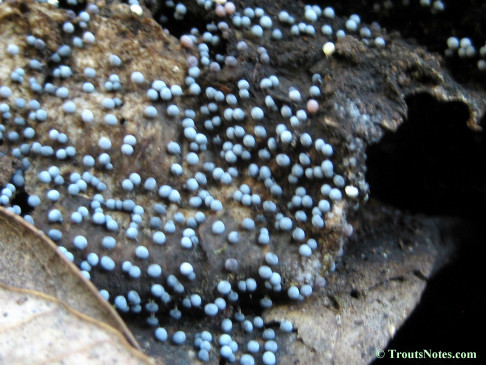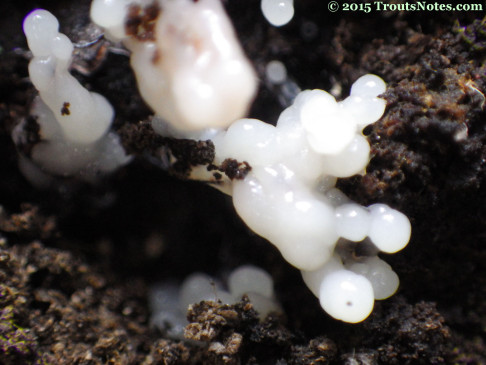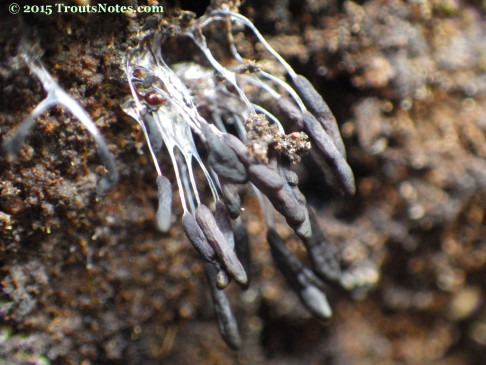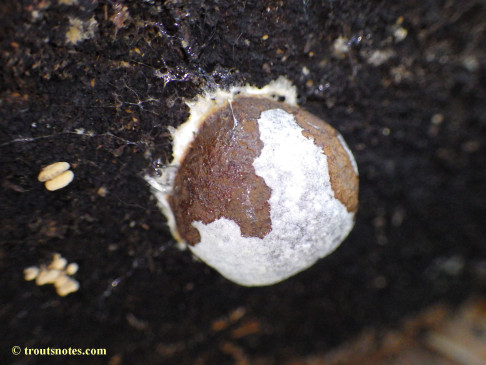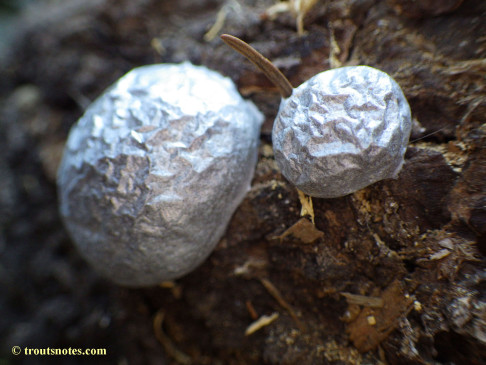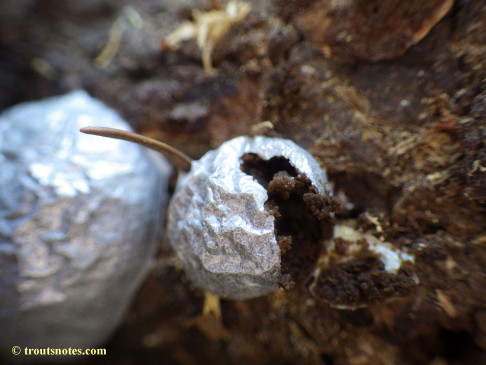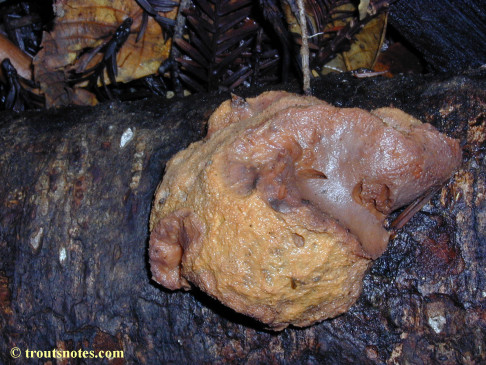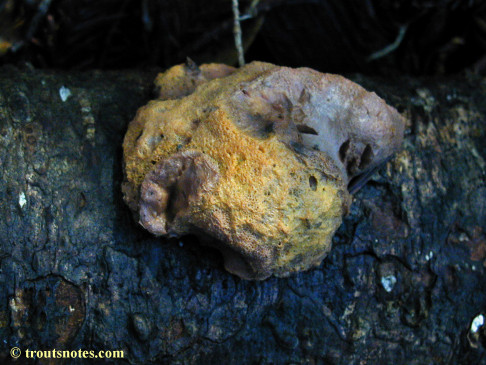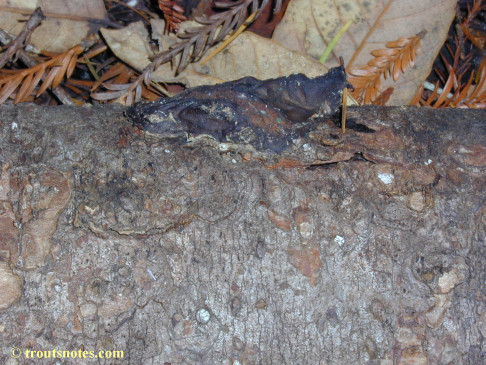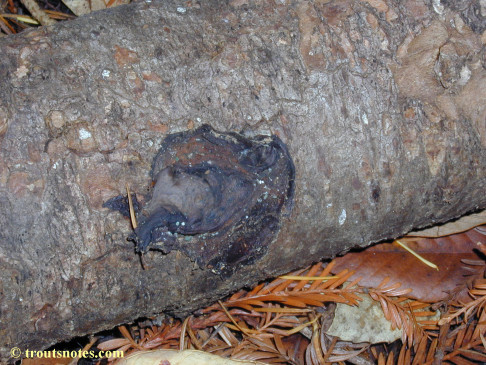Slime-molds (myxomycetes) love it here. These used to be lumped with fungi but deserved having their own kingdom. Their name is misleading as they have nothing to do with molds. Presently they are most commonly regarded as “social amoebas” and called the Dictyostelids.
These grow from spores as amoeba-like organisms which, if needed, can reversibly form a flagella. When two of them are compatible and hook up to mate, they fuse together into one organism. Rather than producing offspring, they continue to divide and grow together as a single *multi*nuclear organism with shared protoplasm. The form taken by this increasingly kinky relationship is called a plasmodium. Under certain conditions the plasmodium will crawl to the surface like some gigantic amoeba and form one of four types of fruiting bodies that eventually dries out to release new spores and start the cycle over. The organization and complexity of those fruiting bodies is mind boggling in the details as the images below will illustrate. Where the fruiting structures need connective or supportive parts some of the individuals sacrifice themself to become nonreproducing structural components in order to enable the reproduction of the majority.
If slime molds experience adverse conditions they can harden into a protective structure called a sclerotia. I’m just learning about these things despite being around them here and in Texas before that. I’m not 100% certain what I am looking at in some cases, so my apologies in advance for an abundance of question marks, maybes and probably.
Slime mold mostly eats bacteria. It might be debated just how conscious or intelligent they really are but the slime molds have been shown to be able to navigate mazes, including retracting their growth after exploring an unproductive path, and have been demonstrated to be able to successfully operate the controls of robotic devices — given some *very* rudimentary objectives. They have even been suggested to be of value for planning the most efficient design of major roadsystems in urban areas. And while they would no doubt be a lot cheaper to employ than a human transportation system designer, I’d hedge my bets on how well that one would actually work out in reality.
There are several types of slime molds here that are not closely related to each other.
This first pair of images is from a few years ago. These pink balls show up here from time to time. I had assumed for some years that they were a sort of a fungus. They are actually a common slime mold named Lycogala epidendrum. Their common name is Wolf’s milk slime.
Just a few days ago I found some more but did not have a camera with me. When I got back to them a couple of days later with a camera they had changed color from pink to brown.
After getting some images home and seeing them in a larger view I was puzzled by some small red balls that I noticed towards their upper left.
I went back to try and get a better image with more details.
I don’t know what they are, at least not why they went red, but they more recently have turned pink so I assume it is part of this slime mold.
When trying to get better images I also noticed a cool insect of some sort. I have no idea what it is.
Those are all now starting to dry and open up.
More images of Wolf’s milk slime
Leocarpus fragilis (insect egg slime mold)
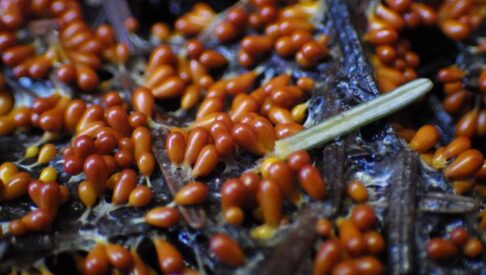
Stemonitis
These chocolate-tube slime molds are another sort that lives here. Despite the name I can’t imagine anyone has actually tasted one in real life. The genus is Stemonitis but I do not know the species. It has a tube like sporangium that can reach 2 cm.
Apologies for the graininess of several but somehow I had the ISO speed too high.
Fuligo
The most noticeable slime mold here is Fuligo septica; tragically it bears the rather sad common name of the “Dog Vomit slime mold”.
More images of Fuligo septica
Unidentified
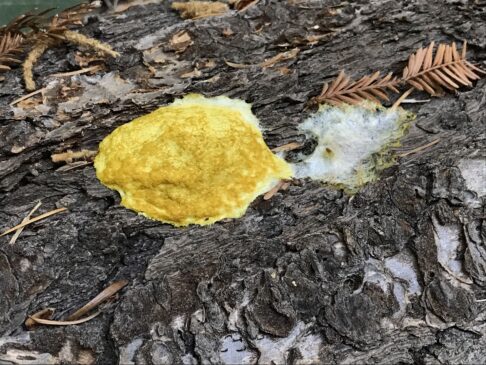
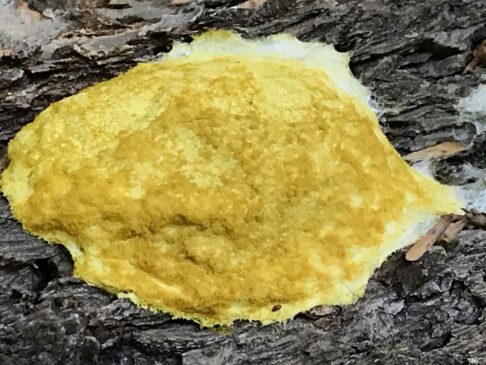
A small slime mold making an appearance on 13 May 2015.
I do not know exactly what this is but it is a slime mold plasmodium.
Similarly with this plasmodium that is still streaming its way into becoming an aethalium. It looks very much like Fuligo septica but is a different color.
This is yet another slime mold:
This one appears to be the tapioca slime mold (Brefeldia maxima)
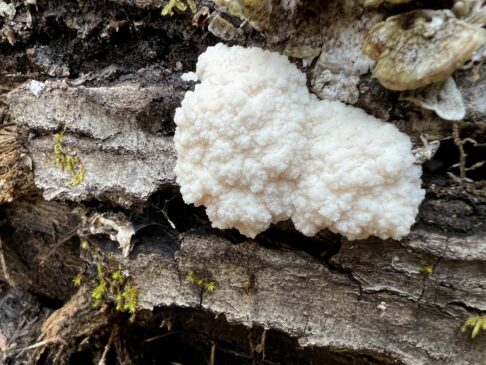
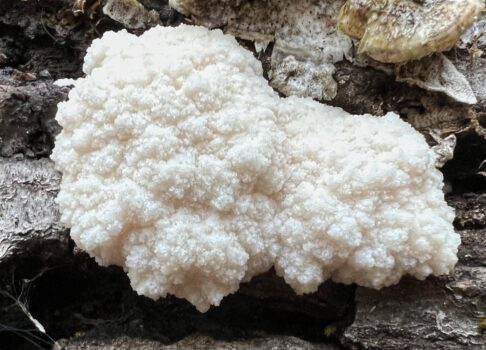
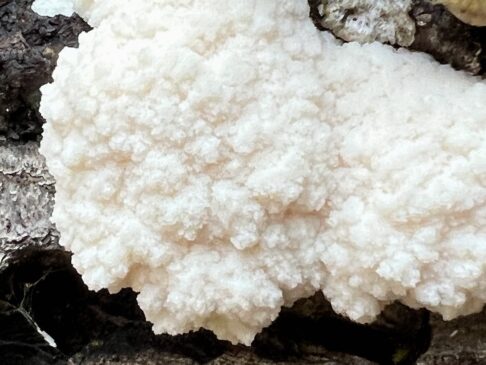
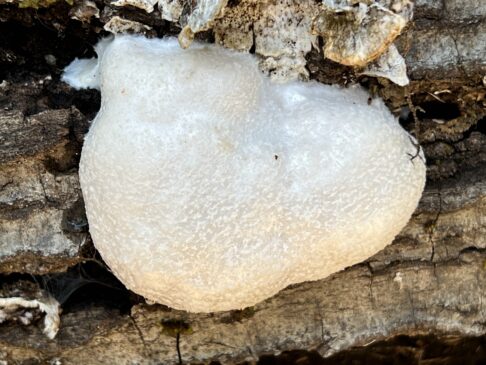
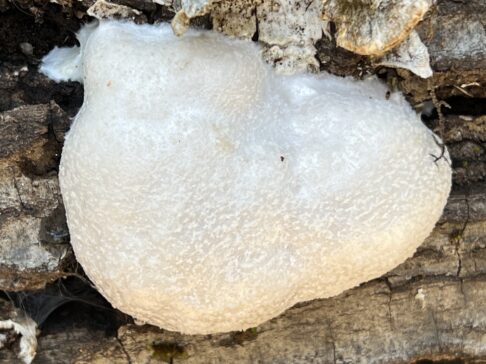
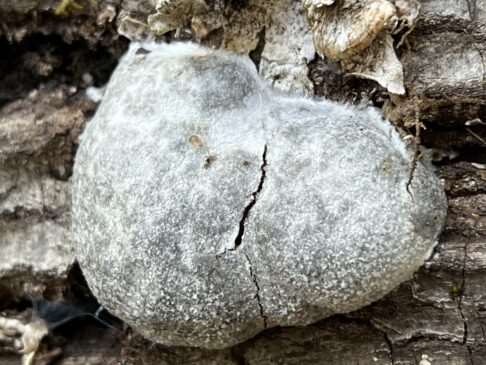
And more:
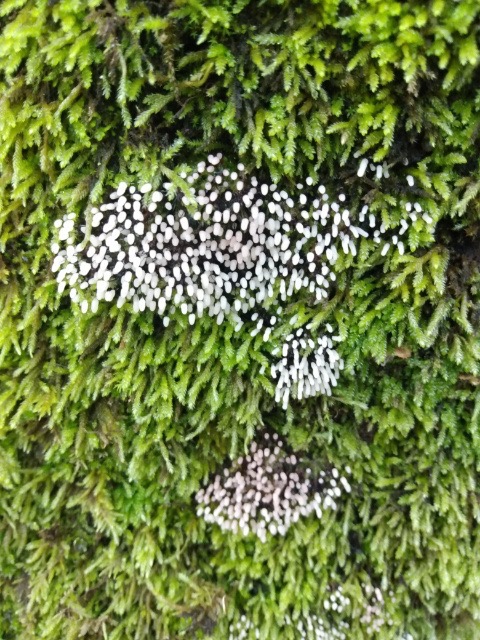
Another sort of something similar.
Some sort of slime-mold’s aethelia.
And another
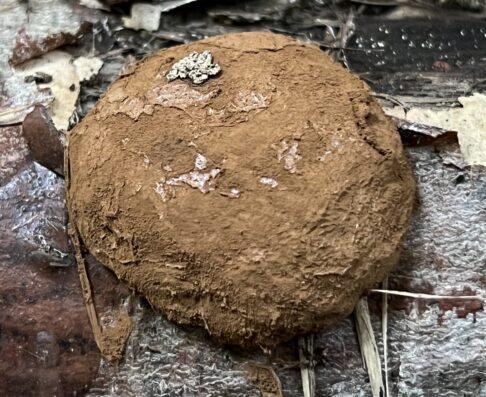
A similar appearing slime mold.
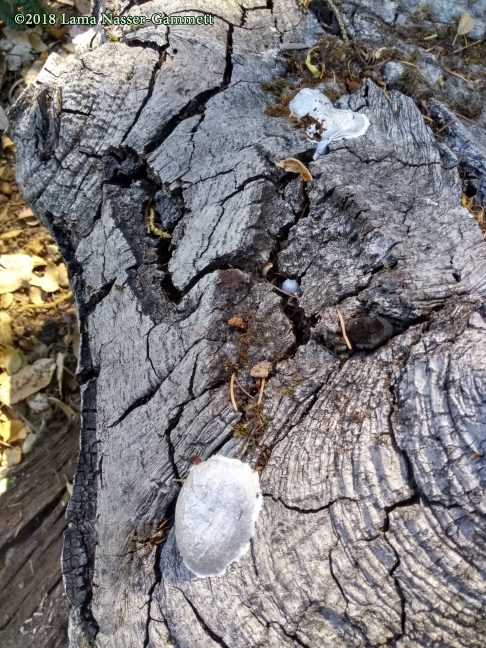
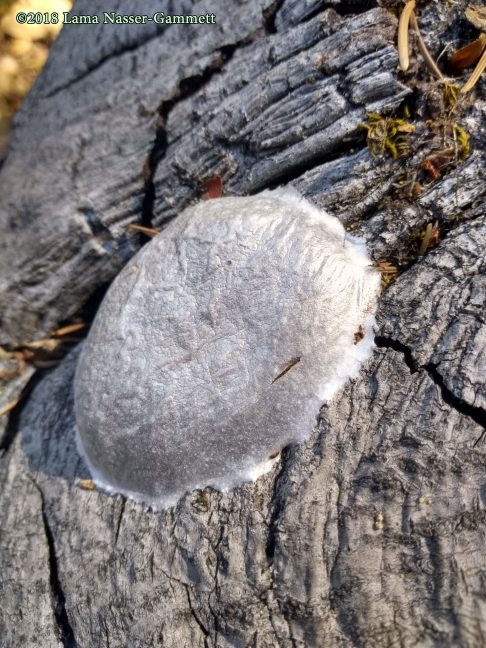
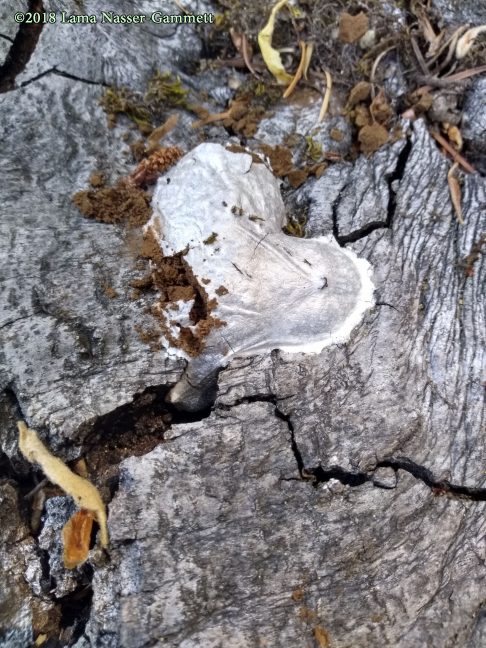
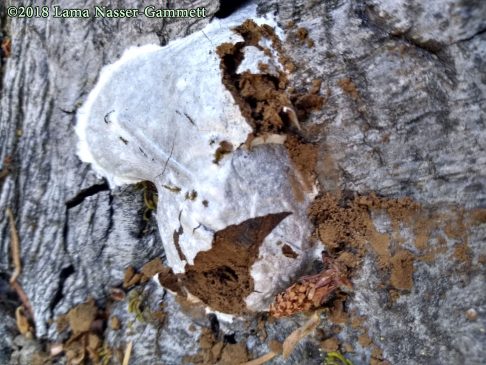
Unknown
This last set is an unknown I suspect might be associated with a slimemold or at least it reminds me of their sclerotia although it is not always rock hard so I really do not know. It lived here for several years (almost 4 years!) going back and forth, according to the weather, in between what felt like raw liver to the touch to being rock hard — and staying in the latter state until the next wet period.
I still don’t know what this is.

